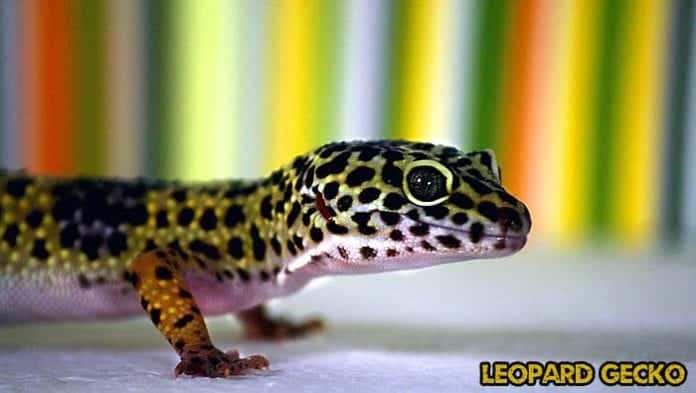
Leopard Gecko: At present, reptiles as pets are becoming an increasingly growing trade in the market. Reptiles such as geckos, lizards, pythons, and many more may not be your conventional house pets, but they are highly popular because of their low-maintenance requirements.
Among these reptiles, the common leopard gecko (Eublepharis macularius) is perhaps one of the most popular. Moreover, they are considered the first-ever lizard species to be domesticated.
The leopard gecko got its name from the black body spots resembling the leopards.
The leopard gecko is more than that. Below is some interesting information that might make you love and appreciate leopard geckos more. Let’s take a closer look.
Table of Contents
Leopard Gecko Physical Appearance
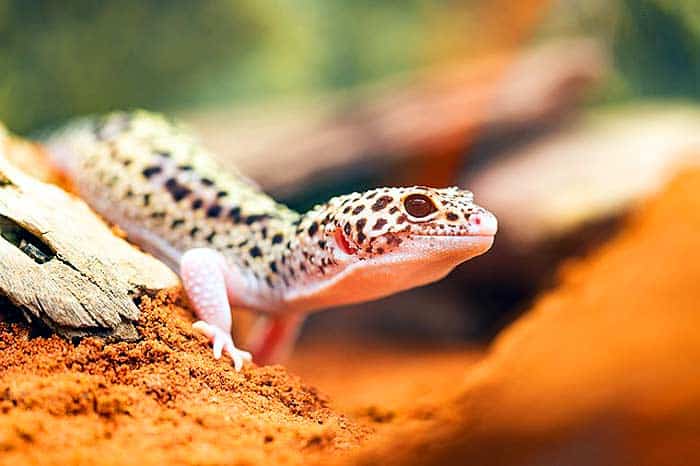
Regarding physical appearance, leopard geckos are characterized by having brown, yellow, white, and leucistic (partial loss of pigmentation) coloration.
- Most of the time, their overall white or pale yellow coloration is marked by dark brown spots.
- Their skin appears rough because of these spots and bumps, but their integument is soft and smooth.
- Unlike other geckos, leopard geckos appear to be very unusual because of their presence of eyelids. Aside from that, they also lack the clinging toe pads. Because of this, they only climb on vertical surfaces.
- Leopard geckos exhibit sexual dimorphism as males are more heavily built than females. Males leopard geckos also have thicker necks and broader heads, wider tail bases, a V-shaped row of pre-anal pores, and larger post-anal swellings.
- When it comes to size, juvenile leopard geckos usually measure from 3 to 4 inches long.
- Adult male leopard geckos usually are 8 to 10 inches long, whereas their adult female counterparts are just 7 to 8 inches long. In some cases, adult males could reach nearly a foot.
![]()
What is with the tail of Leopard Geckos?
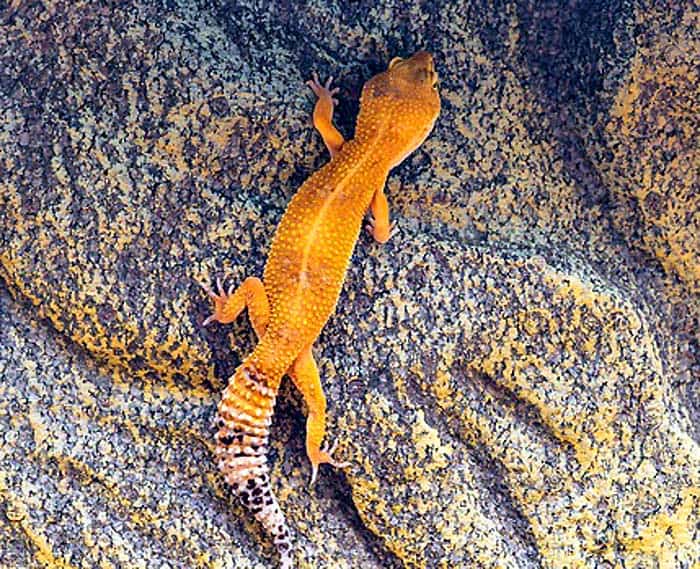
Generally, when geckos are attacked by their predators, their reaction would be to detach their tails from the main body.
- The tail will then move to get the attention of the predator while the gecko tries to get away from the situation (In some gecko species, it would be normal to return later to the site and eat the detached tail to retrieve the energy and nutrients found in the lost tissues.
- Interestingly, the tail of leopard geckos functions to store fats (however, this is not exclusive for leopard geckos but other lizards as well). Because of this, the stored fat is at high risk of loss, especially when the tail is regenerated.
- In this case, this phenomenon is extremely disadvantageous. According to studies, the regeneration of tails in young geckos occurs rapidly but, unfortunately, is not prioritized when it comes to energy allocation (even despite the reduction of resources).
- It was found that these new geckos’ tails appear larger than their former counterparts and exhibit more massive amounts of bones, muscles, and subcutaneous and inner fat than their original counterparts.
- In general, the regeneration of the tail affects the overall tissue mass and distribution within it. As alluded to earlier, body growth will be slowed at the expense of tail growth. However, the stored fat will be used as an energy source for the body and reproductive growth later in the gecko’s life cycle.
![]()
Leopard Gecko Lifespan
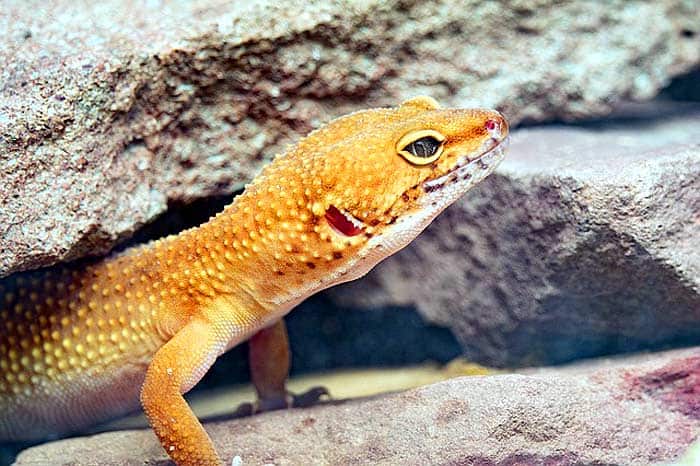
One of the reasons why leopard geckos are considered to be the best pet reptile is their impressive longevity.
- When held captive, leopard geckos can live up to 15 to 20 years, and may even reach until 30 years.
- The lifespan is relatively longer than most reptiles of similar size as they only live up to 2 to 3 years.
![]()
What Do Leopard Geckos Eat?
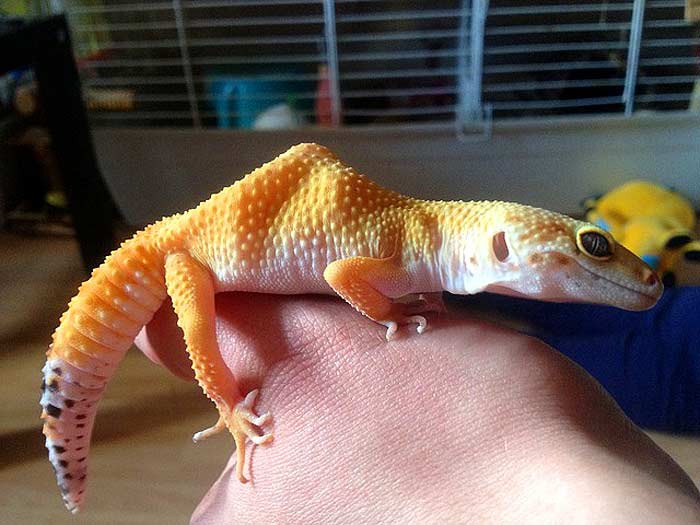
Like most reptiles, leopard geckos primarily feed on insects. These include crickets, silkworms, mealworms, waxworms, and super worms.
- In the wild, leopard geckos are not blessed with abundant food.
- Just like humans, fat leopard geckos are thought to be healthy ones so. In captivity, most pet owners of leopard geckos tend to overfeed their pets. However, this practice is incorrect. Often, this leads to obesity which thus results in the reduction of reproductive potential, possible organ failure, or worse, death.
- Overweight and obese leopard geckos are characterized by having obvious bloated-looking bellies, abnormally fat caudal tails, and tend to be very inactive. Aside from these, they may also have fat deposition at the back of their forelimbs.
![]()
Where Do Leopard Geckos Live?
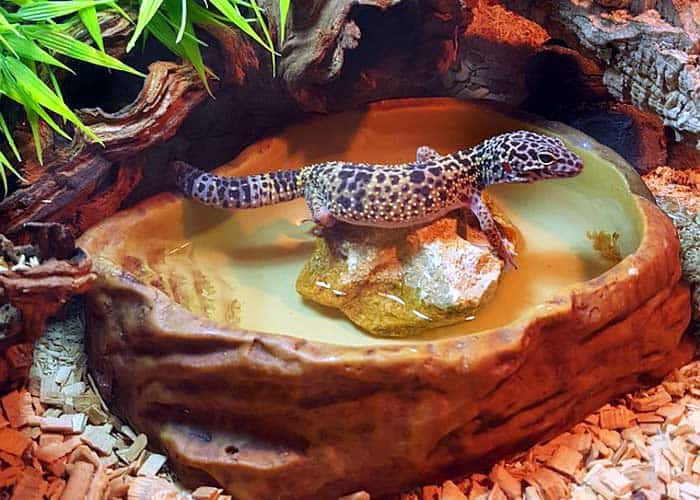
At present, a considerable number of the world’s total population of leopard geckos is held captive.
- Interestingly, leopard geckos were initially found in the broad strip of land that runs from Pakistan to Iraq. However, this does not mean that they are desert creatures; instead, it would be correct to say that they are adapted to arid climates in the desert.
- One of their most common adaptations includes hanging on to huge amounts of water as much as possible.
- Moreover, instead of excreting nitrogenous wastes in their urine, they merely excrete white crystals as urates.
![]()
Leopard Gecko Breeding and Reproduction
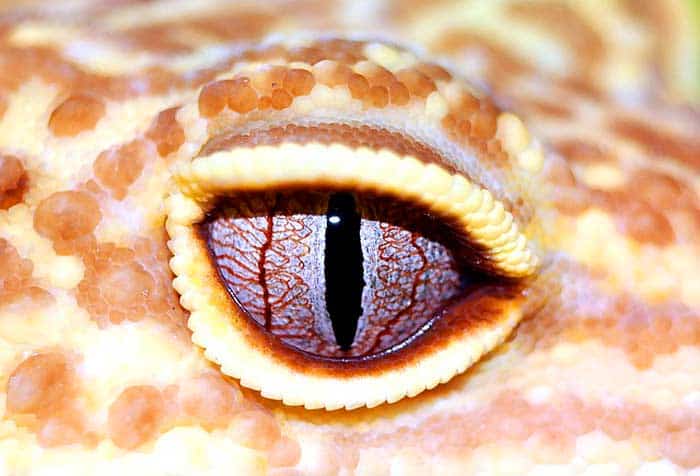
Leopard geckos breed and reproduce like other reptiles in the Gekkonidae family.
- Typically, female leopard geckos become sexually mature after 9 to 10 months and weigh around 45 grams. Leopard geckos found in the northern parts of the equator start their breeding season in January and lasts until September.
- Their offspring hatch at the end of the year, and the females will not lay eggs until April of the next season.
- During mating, the male leopard gecko first goes through his tail vibration routine (that sounds like a rattle). The female leopard gecko will stay still as the male grabs the skin of her neck and then tries to initiate the copulation process. The mating process runs for about three minutes.
What Do Bearded Dragons Eat?
![]()
Behavior and Body Language of Leopard Gecko
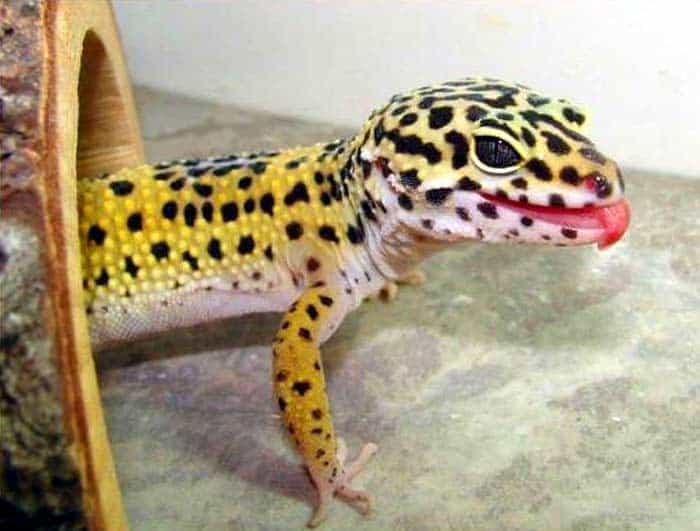
Like all reptiles, leopard geckos tend to express themselves through behavior, actions, and body languages. These include climbing on surfaces, creating weird sounds, biting their tails, flipping their tongues, or digging substrates.
- While it is normal for pet geckos to climb their tanks, sometimes, it could also mean they do not feel good. Because they are naturally nocturnal and inactive during the day, this activity could mean they feel ill or are uncomfortable with the temperature.
- Aside from climbing, leopard geckos also create high-pitched sounds or shrieks, especially when frightened or shocked. This behavior is more common in juvenile geckos than in adults.
- The biting of tails among leopard geckos usually happens during mating. Male geckos exhibit this behavior to show dominance over their mate.
- The flicking of their tongues is another interesting behavior of leopard geckos. By doing this, they become familiarized with their environment; thus allowing them to sense everything around them.
- Last but not least is the digging behavior of geckos. Normally, this is practiced by pregnant female leopard geckos; however, males do this sometimes. The reason is to move the substrate (usually sand), so they can burrow themselves.
![]()
Leopard Gecko Adaptation
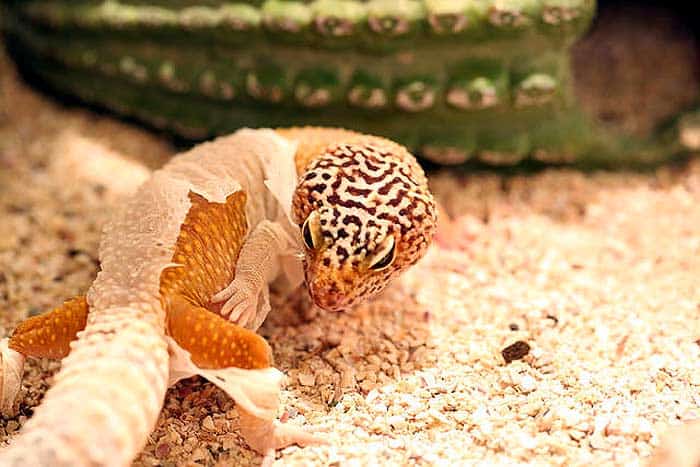
Although popular as pets, very little information is known about leopard geckos in their natural habitats. At present, their exact number is still unknown. Interestingly, their unique spots function for camouflage, thus making them almost invisible to their predators.
- During the day, they remain hidden in the environment and try to move away from the heat. Aside from that, leopard geckos, like other reptiles, exhibit ecdysis (shedding of old skin) to remove their scent.
- By doing so, they prevent themselves from being discovered by their predators.
![]()
Ecological Importance of Leopard Geckos
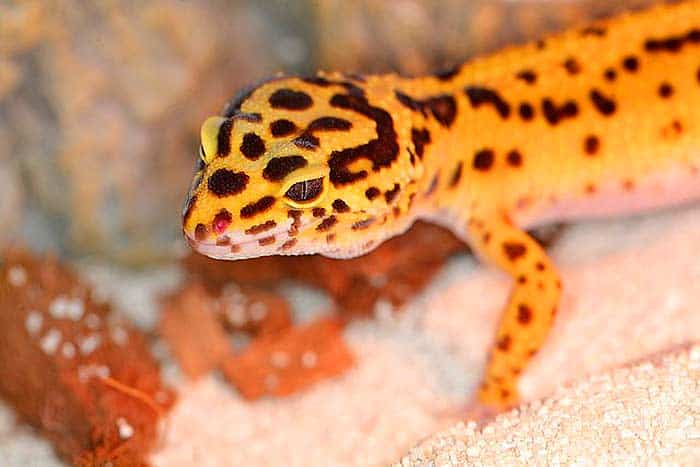
Like other geckos and reptiles, leopard geckos play an essential role in the maintenance of ecosystems.
- Since they feed on insects, they help control the growth of their populations, thus balancing the number of species.
- Aside from being part of the higher food chain, they provide food for predators at higher trophic levels. Such ecological significance might be less felt by humans, but still, it is needed.
- Despite being ecologically important, the population of geckos in the wild is continuously being threatened by habitat loss, pollution, and exploitation. In some places, geckos are being sold as exotic pets.
- Aside from that, they are also being sold for their rumored medicinal properties. Although still not scientifically proven, some of their body parts are speculated to cure diseases like a simple cough, asthma, AIDS, cancer.
![]()
Leopard geckos are great to keep as pets, but we should also keep in mind that their existence, especially in the wild, is continuously being threatened by human activities.
Although people are becoming more aware of the threats from anthropogenic activities, only a few take actions to prevent their extinction from happening.
If we want future generations to witness the sights of geckos and other related species, concrete actions are needed to prevent the loss of these species.
![]()

















I like how you said that when held captive, leopard geckos can live up to 15 to 20 years, and may even reach until 30 years. My cousin told me he would like to get a reptile but he does not know much about them. I’m sure this article will help him know more about how to take care of a gecko and it might be a good option for him. https://reptmart.com/lizards-for-sale/leopard-geckos-for-sale/